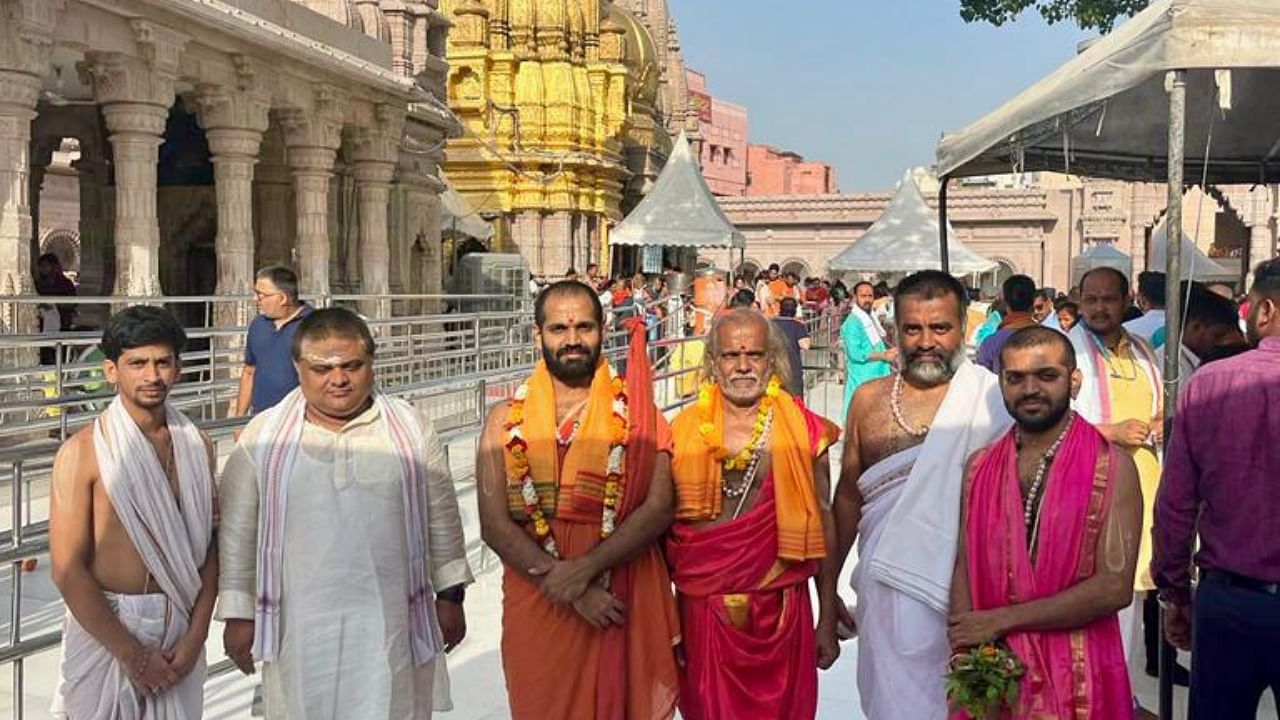
Sri Vishwavallabha Theertha swamiji of the Sri Sode Vadiraja mutt, Udupi Shree Krishna temple, inspired by 16th century `Dvaita’ philosopher Sri Vadiraja Swamy’s travelogue, `Tirtha Prabandha’, has embarked on a mission retracing Sri Vadiraja’s journey covering tirthakshetras across India.
Sri Vishwavallabha Theertha swamiji, in embarking on the ancient pilgrim route, intends not to just trace history and culture of kshetras, but is also keen on popularising Sri Vadiraja’s self-composed `shlokas’ on tirthakshetras among masses with the help of social media.
“The shlokas in Sanskrit language, gives us enormous information about the kshetra from a vedic, puranic and historic angle,” said Sri Vishwavallabha Theertha swamiji. Tirtha Prabandha has 235 such shlokas and covers more than 112 kshetras, he added.
Also Read | A cliff-temple at Mahakuta
“With this objective in mind, I and my disciples had visited tirthakshetras, spread across 12 states in North India, covering a distance of 9,800 kms in a van in June this year. Teerthayatra also covered sacred rivers and hills mentioned in Tirthaprabandha,” he said.
Video shorts about these kshetras with the shlokas, not exceeding a length of 60 seconds, were shared on social media platforms like YouTube, Instagram and Facebook. “The response has been good,” said Sri Vishwavallabha Theertha swamiji.
The pontiff, drawing comparisons between the 16th century travelouge and his travelogue, lamented that excessive commercialisation and tourism had diluted the sanctity of some temples. Due to neglect by devotees, few temples had become dilapidated, he said.
“We stumbled on unknown kshetras like the Bana Ganga kshetra. Lord Krishna, after being hit on the toe by hunter Jara’s arrow, reached this kshetra,” he said. At many kshetras, they found priests chanting shlokas unaware of the fact that they were composed by Sri Vadiraja.
Udupi-based artist Purushotam Adve, who has seen Swamiji’s shorts on YouTube, says the video clipping backed by the smooth narration about the kshetras by Sri Vishwavallabha Theertha swamiji himself appeals to viewers across ages.
Bengaluru-based techie Hariprasad Nellitheertha, who has translated Sri Vadiraja's Tirtha Prabandha into the English language, says a very good outcome of Sri Vishwavallabha Theertha swamiji's undertaking is that lesser known kshetras can get `jeernodhara' and become accessible by `astikas'.
Sode mutt pontiffs intend to find time in their busy schedule and continue visiting kshetras mentioned in Sri Vadiraja’s unique travelouge.
Stone inscriptions
Sri Vishwavallabha Theertha swamiji of Sode mutt, besides popularising shlokas on social media, also had stone inscriptions with Sri Vadiraja Swamy’s Tirtha Prabandha shlokas installed in temple premises. "Barring some temples, declared as protected monuments by ASI (Archeological Survey of India), we had stone inscriptions with shlokas in Sanskrit language installed in all temples in Karnataka. Ahobilam temple in Andhra Pradesh installed a stone inscription with Sri Vadiraja’s shloka in Telugu language", informed Sri Vishwavallabha Theertha swamiji.
About Sri Vadiraja (1481 CE to 1601 CE)
Sri Vadiraja, 20th in lineage of swamijis (Sri Vishwavallabha Theertha swamiji is the 36th) of Sri Sode mutt was hailed as a gifted poet and writer. He was initiated into asceticism at the age of eight years and took out his first `Bharatha Tirtha yatra’ at the age of 19. Sri Vadiraja lived upto a 120 years and completed three Bharatha tirtha yatras. He composed a compendium of Tirthakshetras with four chapters (Paschima, Uttara, Purva and Dakshina Prabandha) covering the entire subcontinent in a circular fashion. He ascended Paryaya peetha in Udupi Krishna temple as many as eight times.